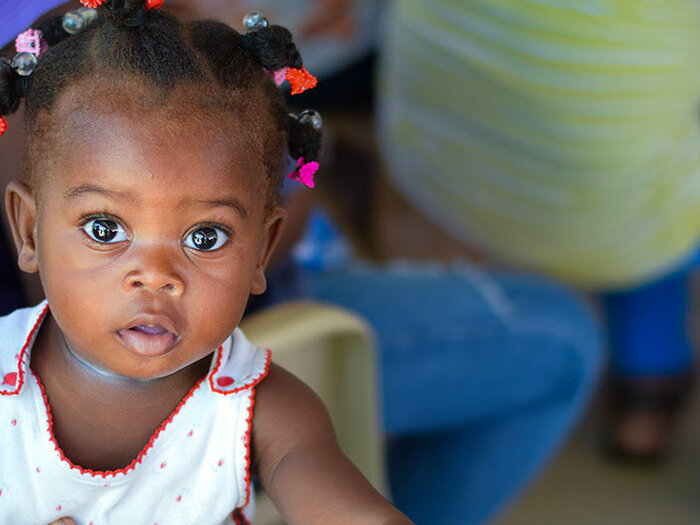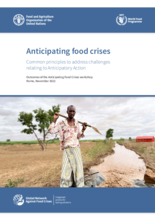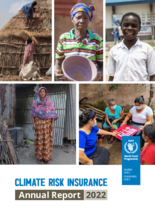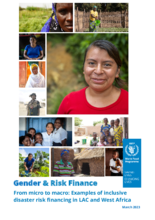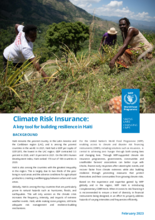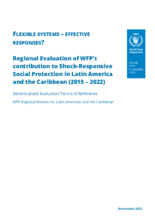Haiti
- 1.8 million
- people face emergency levels of hunger
- 4.9 million
- people are in acute hunger, almost half the population
- 20,000
- people face famine in urban areas where a cholera pandemic has taken hold
Haiti's Human Development Index value for 2021 ranks it at 163 out of 191 countries and territories. Hunger tightens its grip on vulnerable Haitians as insecurity, violence and deepening economic woes are driving a complex emergency in Haiti. The number of food insecure Haitians has tripled since 2016.
Haiti has one of the highest levels of food insecurity in the world. A total of 4.9 million Haitians - nearly half the population - do not have enough to eat, and 1.8 million are facing emergency levels of food insecurity.
Poor nutritional status among children is another reflection of the severity of food insecurity: 22 percent of children in the country are chronically malnourished, 10 percent are underweight and 66 percent of under 5s suffer from anaemia, which compromises their development and leads to lifelong health issues.
Among other factors, one of the drivers of food insecurity is poor performance of the agriculture sector and a heavy dependence on food imports, which account for more than half of the food and 83 percent of the rice consumed. This makes the country vulnerable to inflation and price volatility in international markets. Consumer prices for major food products are 30 to 77 percent higher than in the Latin America and Caribbean region, making them unaffordable for vulnerable populations.
These issues have been exacerbated by a series of natural disasters over the past two decades, including severe storms, flooding, landslides, drought, the devastating earthquake that rocked the country in 2010, the category 4 Hurricane Matthew, which left 806,000 people in need of urgent food assistance in 2016, and an earthquake which devastated the country's southern regions in August 2021. On the 2021 Climate Risk Index, Haiti is third among countries most affected by extreme weather events from 2000 to 2019.
The World Food Programme (WFP) has been in Haiti since 1969. WFP works with the Government to build sustainable systems to address the root causes of food insecurity and promote resilience. WFP also stands ready to support the Government and the humanitarian community in case of emergency.
What the World Food Programme is doing in Haiti
-
School feeding
-
WFP school feeding programme is considered to be the largest food safety net in the country. Every school day, WFP delivers hot meals to close to 300,000 children across more than 1,000 schools – mainly public – throughout the country. WFP is working with the Government to develop a nationally owned school feeding programme. An important milestone was reached in 2016 with the signing of the first National School Feeding Policy and Strategy, drafted in collaboration with WFP.
-
Support to local agriculture and markets
-
WFP works with over 70 OPAs (Organisations de Producteurs Agricoles) to source food from smallholder farmers. In 2022, over 2,000 metric tons of local products were bought (or US$2.3 million). WFP also provides capacity building to the OPAs and helps them improve the quality of their products, subsidizes the set-up of processing facilities, and provides them with control equipment. In partnership with the Ministry of Agriculture, WFP also provides technical training on storage and grain conservation, quality control and reduction of post-harvest losses. Such support is linked to our home-grown school feeding programme.
-
Resilience building
-
WFP Food Assistance for Assets (FFA) initiatives address immediate food needs through cash transfers, while promoting the building or rehabilitation of assets that will improve long-term food security and resilience. In Haiti, WFP focuses on disaster risk reduction activities (e.g. watershed management, rehabilitation of key infrastructure and canal irrigation), involving communities, Government and partners in the design of integrated multi-sectorial and longer-term operational plans.
-
Capacity strengthening
-
One of WFP’s top priority is to support the Government to develop policies that promote food security and nutrition objectives. In recent years, WFP supported the Government in updating the National Policy and Strategy for Food Sovereignty, Security and Nutrition, and developing the National School Feeding Policy. Currently, WFP is facilitating the development of the National Social Protection Policy. Since 2014, WFP has also been working with the Government to develop a national database to better identify, target and register vulnerable households (SIMAST).
-
Emergency preparedness
-
To help mitigate the impact of future disasters, WFP works to ensure that stocks of emergency food are on standby in the right locations before the start of the hurricane season, which runs from June to November each year. Emergency stocks pre-positioned by WFP have enabled a swift response to every crisis for the past decade, in coordination with the Directorate of Civil Protection.
-
Nutrition
-
WFP is currently providing emergency food assistance to more than 150,000 people who have been affected by a prolonged drought and the deterioration of the economic situation since 2018. WFP is mostly providing cash transfers to allow people to choose how to address their essential needs while also helping to boost local markets. WFP complements this intervention with Social Behaviour Change Communication activities, to influence healthy behaviour for better nutrition.
Haiti news releases
Go to pagePartners and donors
Find out more about the state of food security in Haiti
Visit the food security analysis pageOperations in Haiti
Contacts
Office
Programme Alimentaire Mondial, Juvenat 7, Pétion-Ville
Port-au-Prince
Haiti

